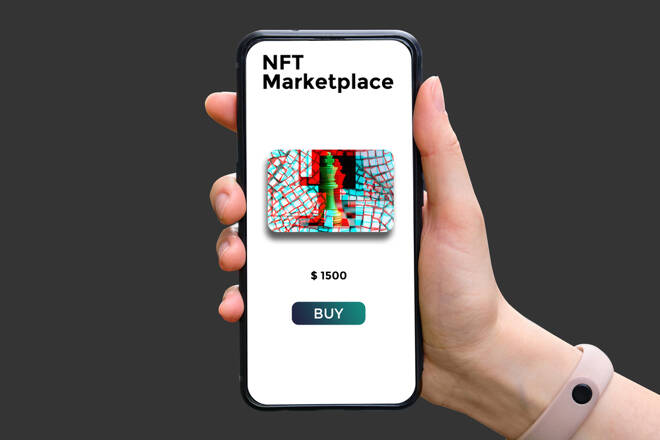Advertisement
Advertisement
OpenSea NFT Trading Volumes Weaker for a Second Consecutive Month
By:
OpenSea NFT trading volumes fall again in March. Rising cryptocurrency prices, illicit activity, and increased regulatory scrutiny have tested NFT demand.
Key Insights:
- Following January’s ATH, OpenSea trading volumes ease back for the second consecutive month.
- Weaker trading volumes coincided with increased demand for cryptos and rising crypto prices.
- The outlook for the NFT marketplace remains bright, however, with more mainstream players going NFT.
2022 started with a bang. OpenSea saw NFT trading volumes hit an all-time high in January.
According to Dune Analytics, ETH trading volume hit $4.97bn in January, surpassing August’s previous ATH of $3.42bn.
Since then, however, trading volumes have eased back.
OpenSea ETH Trading Volumes Retreat Again in March
In February, ETH trading volume fell to $3.58bn, which continued to sit above August’s previous ATH.
ETH trading volumes took a bigger hit in March, however.
According to Dune Analytics, ETH trading volumes fell to $2.49bn in March, well below August’s $3.42bn and January’s $4.97bn.
A similar trend was seen, with OpenSea monthly NFTs sold (ETH). In March, OpenSea sold 1.80 million NFTs, which was down from 2.47 million in January.
For OpenSea, several factors may have contributed to the downward trend in trading volumes. These could include crypto prices, increased illicit activity, and a rise in regulatory scrutiny.
January’s NFT market peak coincided with the crypto market’s trough. In January, Bitcoin (BTC) slumped from a November all-time high of $68,979 to a January and current year low of $32,991. Since January, Bitcoin has been on the rise, supporting the broader crypto market.
After sliding by 16.7% in January, Bitcoin rose by 12.2% in February and 9.0% in March.
LUNA had an even more impressive couple of months. In February, LUNA surged by 74.2% and rose by 12.7% in March.
Finally, one other factor may also be an increase in the number of NFT marketplaces.
This year, LooksRare (LOOKS) launched in January, with January trading volumes reportedly surpassing OpenSea trading volume.
All is not lost for the OpenSea NFT marketplace and others looking for an uptrend in trading volumes and trading fees.
Mainstream transition to Web3 and SOL-Based NFTs to Support Volumes
While NFT trading volumes have fallen and cryptos have found support, interest in NFTs is unlikely to vanish.
Mainstream names continue to file NFT and Metaverse-related trademark applications. Big names across multiple industries have targeted NFTs and the Metaverse to drive consumer engagement.
With OpenSea soon to support Solana (SOL) based NFTs, interest will likely grow.
Downside risks remain. Illicit activity has put NFTs and the Metaverse on the radars of regulators and governments. Stringent regulatory measures could cool NFT appetite further before sentiment shifts.
Near-term, the uptrend in cryptocurrency prices is a factor that could test buyer demand. Rising crypto prices translate into more expensive NFTs, where NFT prices are crypto-based. In March, ETH rose by 12.4%, following an 8.6% increase in February.
In the longer run, a decoupling would allow for the two markets to co-exist.
About the Author
Bob Masonauthor
With over 28 years of experience in the financial industry, Bob has worked with various global rating agencies and multinational banks. Currently he is covering currencies, commodities, alternative asset classes and global equities, focusing mostly on European and Asian markets.
Did you find this article useful?
Latest news and analysis
Advertisement
